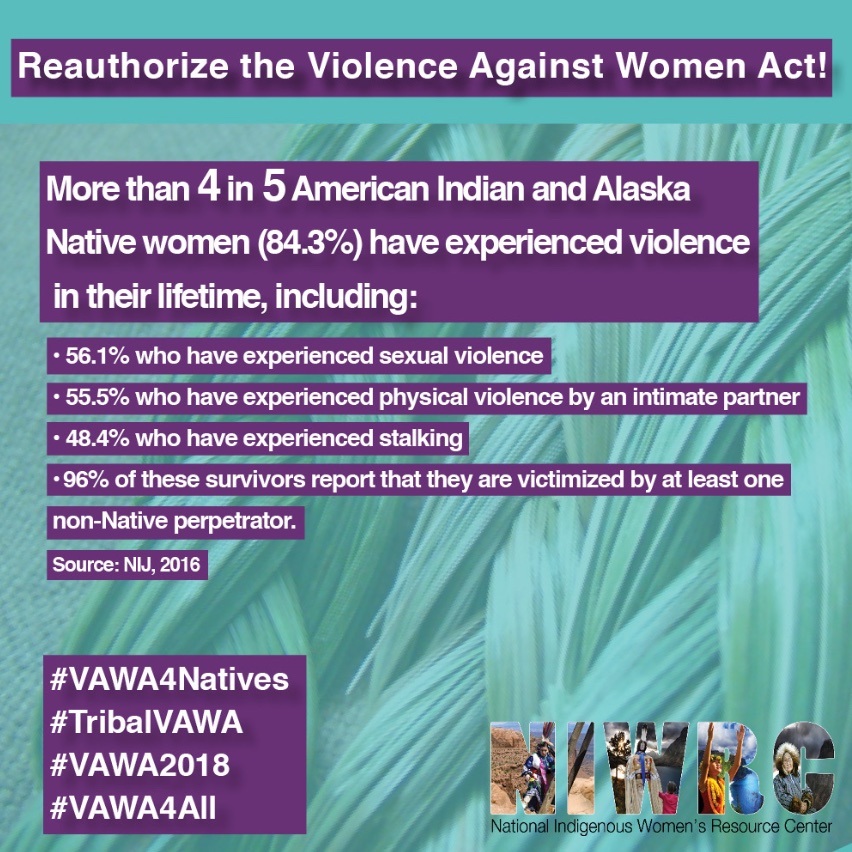Looking Back: American Indian Tribes and VAWA, 1994-2013
 The Violence Against Women Act (VAWA), which Senators Biden and Hatch originally sponsored, was enacted in 1994 as a result of national grassroots organizing by battered women and advocates. This also included Indian women who organized to engage state and federal systems to hold governments accountable to address the nationwide statistics, crisis, and seriousness of violence—domestic violence, sexual assault, and stalking— against women. The Act’s passage marked the federal government’s acknowledgment of the extent and pervasiveness of violence against women and the need for more dedicated resources for law enforcement and judicial responses to these crimes. Over the last two decades, VAWA has grown into an historic Act reshaping the laws, policies, and responses of federal, tribal, and state governments.
The Violence Against Women Act (VAWA), which Senators Biden and Hatch originally sponsored, was enacted in 1994 as a result of national grassroots organizing by battered women and advocates. This also included Indian women who organized to engage state and federal systems to hold governments accountable to address the nationwide statistics, crisis, and seriousness of violence—domestic violence, sexual assault, and stalking— against women. The Act’s passage marked the federal government’s acknowledgment of the extent and pervasiveness of violence against women and the need for more dedicated resources for law enforcement and judicial responses to these crimes. Over the last two decades, VAWA has grown into an historic Act reshaping the laws, policies, and responses of federal, tribal, and state governments.
VAWA and American Indian Tribes and Alaska Native Villages
The VAWA has been reauthorized three times: 2000, 2005, and 2013. The growth the national movement has achieved over the last 20 years with each reauthorization of VAWA includes many important advancements:
1994—VAWA included a 4% dedicated funding stream of the available funding for American Indians and Alaska Natives tribes with a statutory purpose of “developing, enlarging, or strengthening programs addressing the needs and circumstances of Indian tribes in dealing with violent crimes, including sexual assault and domestic violence, against women.”
2000—VAWA increased the tribal dedicated funding stream to 10%, provided increased clarity regarding tribal court protection orders and enforcement, and created a tribal coalition grant program.
2005—VAWA included a Safety for Indian Women Title, recognizing the unique legal relationship of the United States to Indian tribes and women. Congress explicitly provided that the title was “to strengthen the capacity of Indian tribes to exercise their sovereign authority to respond to violent crimes committed against women.” It authorized the creation of a single VAWA tribal grant program, creation of a tribal unit and Deputy Director for Tribal Affairs, and mandated annual tribal- federal VAWA consultations. VAWA 2005 also added dating violence as a new purpose area.
2013—VAWA included an historic amendment affirming inherent tribal authority over non-Indians committing certain acts of domestic violence or dating violence or violation of certain protection orders in the Indian country of the tribe, provided increased funding for the tribal coalitions program, and recognized sex trafficking as a new purpose area under the tribal grants program.
The Road Ahead
The federal law amendments above demonstrate an increasing awareness of the need to address violence against Native women and the critically important role of Indian nations in the full implementation of VAWA. The substantially high crime statistics among Native populations represent the ongoing impact colonization has had on Indian people and nations. The federal Indian legal framework is devastatingly complex and one that Native victims must confront and navigate all too frequently while seeking safety and protection. Overall, resources are scarce and culturally appropriate resources are practically non-existent. Many barriers and questions exist concerning jurisdiction, law enforcement and/or funding availability, lack of culturally appropriate services and victim advocates, emergency shelter availability, and coordinated rape crisis responses. In addition, many Indian tribes are excluded from utilizing all of the legal advances gained under VAWA to protect and serve Native women. During the annual consultation, tribal leaders from Alaska Native villages, Indian tribes from Maine and Michigan, and other regions of the United States have testified to these restrictions and need for additional reforms under VAWA.





